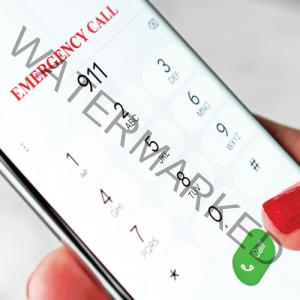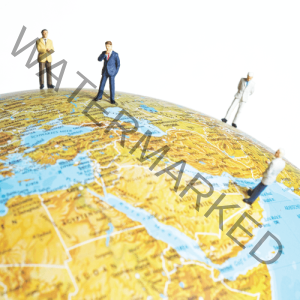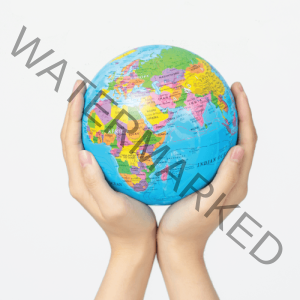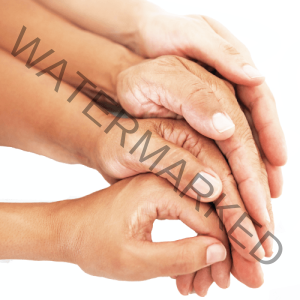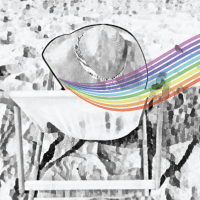
LGBTQIA+ Travel Guides:
Destination NYC - USA
- Atilla Tiriyaki
- Average Reading Time: 19 minutes
- Travel
- articles, atillat, guides
Located in North America, New York is both a city and a state. The city is the largest and most populated in the entire United States of America (USA) and second-largest in North America, with 8.3 million people living in 302.6 square miles or 784 square kilometres. New York City, often abbreviated to NYC, is comprised of five boroughs, Manhattan, The Bronx, Brooklyn, Queens and Staten Island, which in turn consists of hundreds of neighbourhoods across the city. NYC is one of the most diverse cities globally, with over 800 languages spoken and over half the city’s population coming from the Black, African American, Asian, or Hispanic communities. NYC consists of three principal islands (Manhattan Island, Staten Island and part of Long Island). Each borough contains many smaller islands. Roughly 42 islands form part of the city, surrounded by the Hudson, East and Harlem Rivers.
New York City has always played an important role in American history and was once the country’s capital for five years. NYC has many nicknames and abbreviations; however, it was initially called New Amsterdam, a name given by the Dutch settlers that colonised the area in 1608. From the mid-eighteen hundreds, the city became the processing centre for the waves of European immigrants travelling for weeks at sea, all pursuing the American dream. For many of the arriving immigrants, the sight of the Statue of Liberty represented hope and freedom in the new world. NYC’s immigrant history, even today, still plays an important role, with many of the neighbourhoods and areas representing the city’s diversity.
Some interesting facts you might not know:- Visitors to NYC will often hear the symphony of car horns while walking around; however, honking your horn is actually illegal
- NYC is home to the world’s third-largest library, The New York City Library. The library is home to more than 50 million books, with such a wide selection means that there is likely something to suit everyone’s tastes
- The elevated park, known as the High Line, is located above the city’s streets; however, NYC is also home to the world’s first underground park, the Lowline. The Lowline can be found at Delancey Street on the Lower East Side
- New York is home to the super-rich, as more billionaires are living in the city than anywhere else on the planet, and over 500 thousand millionaires call the city their home
- The NYC cabs were not always yellow; initially, the taxis were red and green and were not changed to the iconic yellow until 1912
- The NYC Subway is one of the largest in the world, with over 470 stops, it is estimated that it would take around 24 hours to navigate the whole network
- The Empire State Building is struck by lightning 100 times each year and has its own zip code (10118). On a clear day, you can see five states from the observatories (New York, New Jersey, Connecticut, Pennsylvania and Massachusetts)
- NYC has 520 miles or 837 kilometres of coastline, which is longer than the coastlines of some countries like Cyprus (658 km), Hong Kong (733 km) and The Netherlands (451 km)
- NYC once had a pneumatic (pressurised air) mail delivery tubular network that connected 23 post offices across 27 miles (43.4 kilometres) and delivered 97 thousand letters each day until 1957, when it was decommissioned
- NYC is home to the first pizzeria in the USA. Lombardi’s was opened in 1895 and is still open today. The restaurant can be found on 32 Spring Street in Little Italy (Downtown Manhattan)
- NYC is home to the largest marathon in the world. The marathon started in 1970 and now typically takes place in early November. The course is 42.2 kilometres or 26.2 miles long and goes through all five NYC boroughs
- NYC has 28,000 acres of parkland and 14 miles (22 kilometres) of public beaches
- Before becoming the immigrant processing centre, Ellis Island was used to hang pirates and criminals, which took place up until as late as 1839. 90% of Ellis Island is human-made, built from landfill and the earth from excavating the NYC subway
- NYC is one of the most featured cities in films and tv shows, and each year more than 250 featured films use the city as the location to shoot their movies. Central Park is one of the most filmed locations in the world, and since 1908, the park has appeared in more than 240 films
BY AIR
There are three main airports close to New York City, JFK Airport, La Guardia Airport, and Newark Airport in New Jersey
- John F. Kennedy (JFK) International Airport (///happy.rested.water – JFK (IATA) | KJFK (ICAO)) is an international airport in Queens, New York, and it is the largest and busiest international airport in North America. The six working terminals handle domestic and international flights to all six continents worldwide and has over ninety airlines in operation from within the airport. There are many options for getting to and from the city, including a fixed fare of $52 using a Yellow Cab or using one of the many available private hire and shuttle bus services. A special line that forms part of the NYC subway connects the airport to the extensive subway system, enabling visitors to travel into Manhattan and the other boroughs via one or two connections
- LaGuardia Airport (///sand.jolly.admits – LGA (IATA) | KLGA (ICAO)) is an international airport in Queens, New York. The airport is the third busiest airport in NYC and is a hub for American Airlines and Delta Air. The four terminals and 86 gates act as both an international and domestic hub, with frequent and popular domestic flights flying to and from the airport. The airport is not connected to the NYC subway network; however, metered Yellow Cabs are available to and from the city, and there are also many shuttle bus and private hire services available
- Newark Liberty International Airport (///plates.factor.party – EWR (IATA) | KEWR (ICAO)) is an international airport in Newark, New Jersey. The airport is one of three main international airports and is the second busiest airport for visitors arriving in NYC. Newark is the third-largest hub for United Airlines and is home to fifty airlines operating from the airport. Getting to and from Newark is easy, with an air train connecting Newark to Penn Station, a train station located in downtown Manhattan. Metered Yellow Cabs are also available, as well as private hire and shuttle bus services
BY SEA
- NYC Ferries – New York City is made up of a number of islands. Visitors arriving to and from New York can use the city’s extensive ferry network with eight routes starting from Soundview in the Bronx down to Rockaway in Queens. A one-way journey costs $2.75, and multi-day passes are also available. For more information, visit the NYC Ferry website (https://www.ferry.nyc/)
- Cruise Port Terminals – visitors arriving via one of the many cruise liners can visit New York City from either the Manhattan Terminal (///hatch.curl.prep) or Brooklyn Terminal (///giving.arrow.keeps). Penn and Grand Central Terminal are the closest train stations for the Manhattan terminal, and Columbus Circle (Routes, A, C, B, D or 1) is the nearest subway station. For the Brooklyn Terminal, Penn and Grand Central Terminal are the closest train stations. For the subway stations, there are two options. Option 1 – train to Smith/9th Street Train station (Route F) and change to the B77 bus. Option 2 – train to Borough Hall (Routes 2, 3, 4, 5, N or R) and change to the B61 bus located on Atlantic Avenue. For more information, visit the NY Cruise website (https://www.nycruise.com/)
BY TRAIN
- Grand Central Station (///sticks.eagle.stress) is the world’s largest terminal and the third busiest train station in North America. The station is the southern terminus of the Metro-North Railroad’s Harlem, Hudson and New Haven Lines. The station mainly connects trains within the interior of New York and to the state of Connecticut
- Pennsylvania Station – also known as Penn Station (///shadow.mirror.memory) is the central station for the train service provided by Amtrak. The station is the busiest train station within the Western Hemisphere, servicing more than 600,000 passengers each day. Penn Station has 21 tracks and 11 platforms serving the Northeast Corridor and Empire Corridor lines. The station connects NYC to cities including International (Montreal and Toronto in Canada) and Domestic (Boston, Philadelphia, Pittsburgh, Washington D.C., Norfolk, Chicago, Charlotte, Atlanta, Miami and New Orleans)
Interactive Airport Terminal Maps

- NYC Subway – the New York Subway is one of the largest globally and is comprised of over 470 stations and 840 miles of track. The subway system is open 24-hours a day and has hundreds of entrances throughout the city. Subway entrances typically have globes that can be found above the entrance. A red globe indicates that the access or station closes at night, whereas a green globe indicates it is open 24 hours, seven days a week. The subway network is made up of 36 lines and 24 routes, with lines and routes working in a similar grid-like system. To get from one part of Manhattan to another, you would likely have to use multiple lines and routes, and it is not uncommon to walk a few blocks to pick up a different line. To use the subway, you will need to purchase a MetroCard. You can pay-per-ride, which typically costs $2.75 per person per trip or an unlimited MetroCard, which costs $33 for seven days or $127 for thirty days. The unlimited MetroCard allows you to travel on the subway or buses as many times as possible without any additional costs. The same pay-per-ride MetroCard can be used for up to four people; however, only one person can use an unlimited MetroCard. You can purchase a MetroCard at any subway station using the vending machine or any station booth with a teller. Subway station machines accept cash, ATM cards and all major credit cards, whereas tellers can only accept cash. You will not be able to purchase a card on any buses and cannot travel on a bus without a MetroCard. When you initially buy a MetroCard, you will be required to pay a $1 fee. For more information, please visit the NYC MTA website (https://new.mta.info/fares/where-to-buy-a-metrocard)
- Buses – NYC has an extensive bus network across the city, with over 4,373 public buses throughout all five boroughs. The bus routes and stop locations can be found by visiting the NYC MTA website and downloading any of the five available PDF bus maps (https://new.mta.info/maps). The cost for a single journey on a local bus is $2.75; however, express buses (between boroughs) can cost up to $6.75 for a single trip. To take a bus in NYC, you will need to obtain a MetroCard beforehand from any of the subway stations found throughout the city. The MetroCard can be used on both buses and the subway. You can pay-per-ride or purchase a seven or thirty-day unlimited MetroCard. It is important to note that you will not be able to ride on the bus without a MetroCard, without sufficient funds on the card to cover the cost, and you will not be able to use cash or top up the card while on the bus
- Taxis – another way to get around the city is by taking one of the thousands of iconic yellow cabs. Yellow cabs can be found throughout the city and can be booked online (https://www.nycyellowcabtaxi.com/), by calling +1-800-609-8731 or by hailing any of the licensed taxis found in any of the New York streets. New York taxis are metered, and the minimum fare is $2.50, which increases by 50 cents per minute or per 1/5 mile travelled. Metered taxis to the city from LaGuardia or Newark airport are metered; whereas; journeys to JFK airport are charged a flat rate of $52. Taxis are convenient; however, you could spend a lot of time and money sitting in traffic during busy periods. Other private hire and fixed-rate taxi companies can be found throughout the city, including Uber
Interactive New York Subway
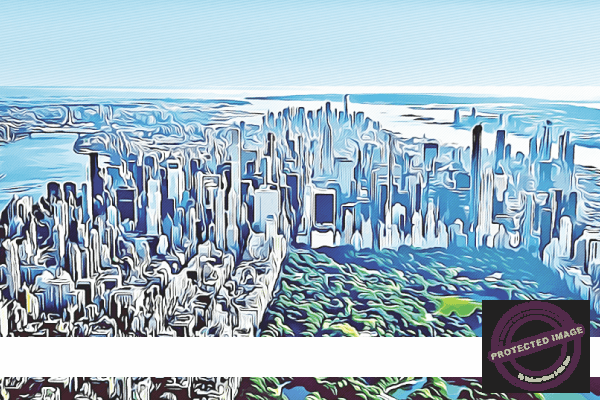
- The Midtown area is the best for getting around for visitors who want to stay close to the many famous landmarks and attractions. The Fairfield Inn & Suites by Marriott New York (///closet.patch.usage) is located between 325 West and 33rd Street, next to Penn Station. With a room rate starting from $100 per night, the hotel is well located, only a short 10-minute walk to the Empire State Building. The hotel offers comfortable rooms that frequent stayers at Marriott hotels have come to expect, a 24-hour fitness centre, and a rooftop bar/ lounge that offers impressive views across the city. For more information visit https://www.marriott.co.uk/hotels/travel/nycfi-fairfield-inn-and-suites-new-york-manhattan-times-square/
- For those wanting to experience New York City’s romantic side, Greenwich Village is the place to stay. With its brownstone buildings, tree-lined streets, popular cafes and restaurants, visitors will see a different side to NYC. The Incentra Village Hotel (///pokers.scrap.lucky) is located on 32 Eighth Avenue and is a historic guesthouse occupying two beautiful brick townhouses. The hotel offers 12 unique and affordable rooms, with the average cost per night around $90, visitors to the hotel are surrounded by antique furnishings and artworks, and the hotel also boasts a parlour and garden for guests to enjoy. For more information visit https://www.incentravillage.com/
- The Upper East Side is known for its luxury accommodation, close to midtown and the famous Central Park. The Upper East Side is a popular area for those wanting a little pampering and luxury. The Park Lane Hotel New York (///dream.robe.matter), which is located on 36 Central Park South, is next to the iconic Central Park. The hotel offers affordable luxury accommodation, with room prices starting from $100 per night. Booking directly with the hotel, guests will receive additional discounts. The longer you stay, the bigger the discount. The hotel’s location makes it easy to get around, and at the same, with a 24-hour onsite fitness centre, concierge service, restaurant, bar and lounge, visitors can enjoy NYC in style. For more information visit https://www.parklanenewyork.com/
- With over 472 subway stations, 4,373 public buses and over 13 thousand yellow cabs, visitors can find more affordable accommodation options by leaving the island of Manhattan. Staying in any of the boroughs such as The Bronx, Brooklyn, Queens, or Staten Island can significantly reduce the cost per night. With a 24-hour transport infrastructure, getting around is easy. Staying in the boroughs would offer a unique experience; however, if this option is to be considered, then the time to popular attractions and any public transport costs would have to be factored into your daily budget

- Stonewall Inn (///army.from.rams) is the gay bar and site in Greenwich Village that sparked a global LGBTQ+ movement. The bar is both a designated National Historic Landmark and National Monument in NYC and is a popular destination for LGBTQ+ visitors to the city
- The High Line (///tester.spite.tell) is a 1.45 mile (2.34 kilometres) long elevated park that was created on the former New York Central Railroad spur. The park offers free admittance, is located on the west side of Manhattan and is open from 12 pm to 8 pm each day. The park has an elevator and ramp access for people with mobility issues, and with all the plants and trees on this former railway line makes a visit to this park not only a unique experience but also an oasis in the centre of the city
- The Museum of Modern Art (///woke.riots.lift), also known as the MOMA, is located in midtown Manhattan. The MOMA is the largest and most influential museum of modern art globally. The museum is home to over two hundred thousand modern and contemporary artworks, from photographs to paintings. The museum usually opens from 10 am to 6 pm throughout the year, and tickets will typically cost $25 for an adult, $18 for seniors, and entrance is free for children up to the age of 16 years
- Brooklyn Bridge Park (///encounter.tins.wacky) is beneath the iconic Brooklyn Bridge and is located at 334 Furman Street in Brooklyn, close to the Two Bridges area in lower Manhattan. The park is an 85-acre park with rolling hills, riverfront walks, stunning gardens, and fantastic city views. The park comprises three piers and has numerous bike paths, walking routes, public art displays, basketball courts, and soccer pitches. The park usually opens at 6 am, and parts of the park begin to close from 8 pm up until 11 pm
- Central Park (///complains.certified.fumes) is located between Upper West and the Upper East Sides of Manhattan and covers an area of over 843 acres. The park is one of the most iconic landmarks within the New York City landscape. It receives an estimated 38 million visitors each year. The park is the fifth largest in the city and is the most filmed location globally. The park is free to visit and is home to over twenty thousand trees, eighteen thousand plants and seven species of mammals. Visitors to the park can enjoy the many historic and stunning walks through the park, take a horse-drawn carriage, play sports or swim in the Lasker pool during the summer months
- Statue of Liberty by Air (///avoid.oddly.pink) a trip to New York is not complete without a visit to the iconic statue of liberty. The statue was gifted to the USA from France to commemorate their alliance during the American Revolution. The iconic figure quickly became a symbol of hope and arrival for the many millions of immigrants arriving in New York by sea since the late 1800s. Many visitors to New York visit the statue via the Staten Island Ferry; however, for a unique experience, seeing the landmark from the air enables you to see the beauty of this majestic statue. Many daily helicopter options are available, whether a private or group tour. Group tours typically cost from $150, and flying during the late afternoon/early evening will enable you to see the statue and city light up
NYC is an LGTBQIA+ friendly city, and most New Yorkers are generally socially liberal. In the 1960s, the city was a very different place. The relationship with the community was not ideal, with police officers frequently harassing members of the LGBT community. The harassment culminated in riots, known as the Stonewall Riots, which sparked a global LGBTQIA+ equality movement. Today, there is a thriving community, with an estimated 700 thousand LGBT residents living in NYC, and bars and clubs can be found all over the city. Christopher Street in Greenwich Village was once the historical hub of gay life and is also home to the Stonewall Inn, the site of the Stonewall riots. Typically, most bars and clubs can be found in Manhattan, especially in Chelsea and East Village on the lower east side.
2020 has been a challenging year, especially with the coronavirus pandemic affecting everyone worldwide. NYC was one of the worst-hit areas within the USA, and the city rose to the challenge of reducing the spread of the virus. With vaccine trials underway, it is only a matter of time until the infection rates fall to controllable levels and international travel resumes. NYC and New Yorkers are resilient and will come through the current challenges and bounce back to being a vibrant city with a lot to offer visitors.
It can be somewhat overwhelming for first-time visitors to NYC, given its size, the number of boroughs, and neighbourhoods. However, though each area is different, they all offer a unique experience. Visitors to NYC will be surprised that there are hundreds of free things to do, from museums to big open spaces and parks. NYC previously had high crime levels; however, following a zero-tolerance policy across the city, crime has continued falling annually. So with the usual travel precautions when visiting a city, most visitors will leave with no issues. People that visit NYC come way wishing that they had more time in the city, and once you have visited, most will want to go back again and again.
If you are looking for a city break, then New York City is worth considering

